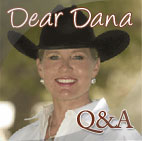Weighing in
By Sheryl Lynde | Horsetrader columnist
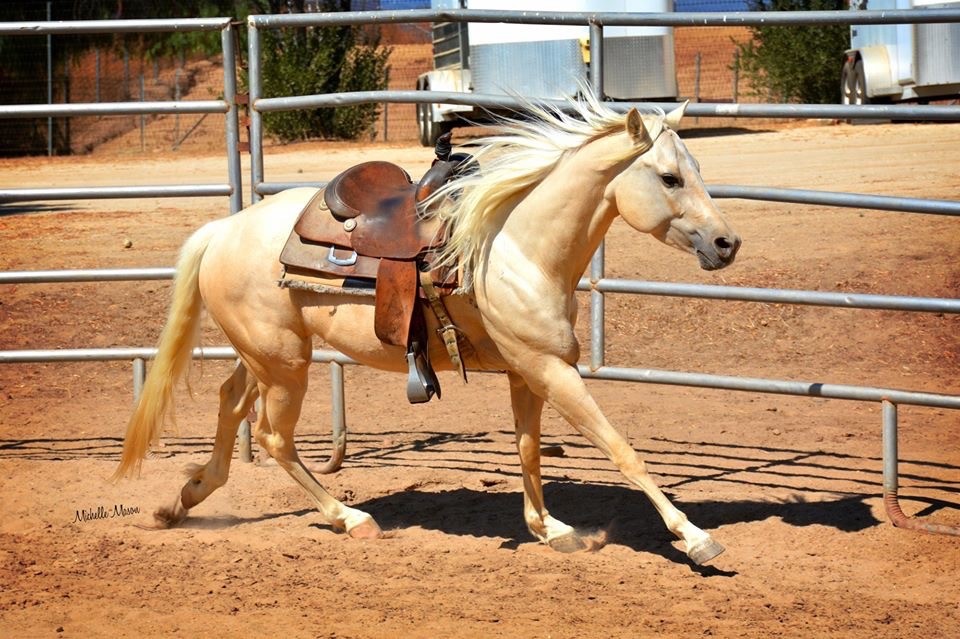
I am a student of the horse. Life is a constant pursuit of truth, and we get to it by asking one question at a time. Everyone has opinions and they are entitled to those opinions. But opinions are a compilation of personal perceptions, preferences and biases developed over a lifetime of experiences and are frequently very different from facts.
Tools of the Trade
By Sheryl Lynde | Horsetrader columnist
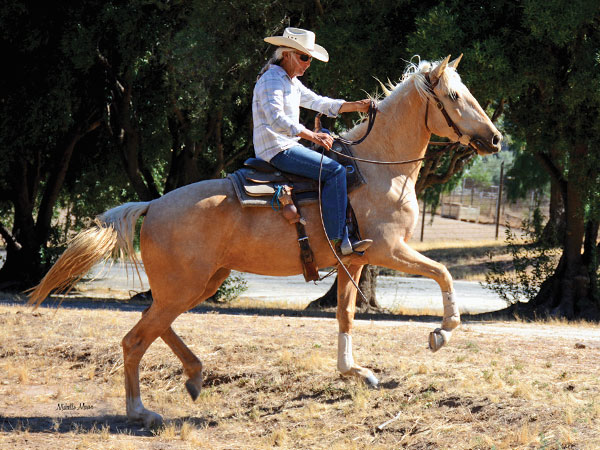
The round pen: A great place to visit, but I wouldn’t want to live there.
The round pen has been an invaluable training aid for me over the years. It offers a confined space (60 feet) to safely start colts as well as to resolve dangerous behavioral issues like rearing, bucking and bolting. It has its purpose, it is a training aid just as the snaffle or driving reins are training aids.
But, just like any aid, it isn’t meant to be overused or lived in. If you stay in there too long it can work against you.
Once a bucker, always a bucker?
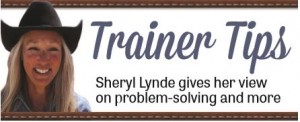 I had purchased a Paint gelding when he was four years old. At the time, I was living in Durango and I just wanted a good-minded gelding to ride in the mountains of Colorado.
I had purchased a Paint gelding when he was four years old. At the time, I was living in Durango and I just wanted a good-minded gelding to ride in the mountains of Colorado.
When I did ride him in an arena setting, I noticed getting him on his right lead was incredibly difficult. He was used in roping primarily, and when horses come out of the box, they are on their left lead in order to be in position on the cow. The more I tried, the more animated his refusals became. He showed his frustration first by crow-hopping, which eventually progressed into bucking.
Moving the Hips
Foundation Training for the Performance Horse with Les Vogt
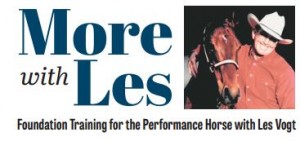 Having control of the horse’s hip is critical for accurate lope departures and lead changes, in addition to helping you maintain proper alignment. If you see a horse missing leads or dropping a lead in back (when a horse changes leads with his front legs but not his back), it’s a pretty good indication that the horse needs more work on hip control. You should have established basic hip control a while back when you did exercise number four on the fence. This session’s exercises will require much more control but shouldn’t be overly difficult if your foundation is strong. If at any time you don’t feel like you’re getting the movement you need from the horse’s hip, go back to the fence to reinforce your point. And remember, make sure the horse is soft in the poll as you ask for any of these movements.
Having control of the horse’s hip is critical for accurate lope departures and lead changes, in addition to helping you maintain proper alignment. If you see a horse missing leads or dropping a lead in back (when a horse changes leads with his front legs but not his back), it’s a pretty good indication that the horse needs more work on hip control. You should have established basic hip control a while back when you did exercise number four on the fence. This session’s exercises will require much more control but shouldn’t be overly difficult if your foundation is strong. If at any time you don’t feel like you’re getting the movement you need from the horse’s hip, go back to the fence to reinforce your point. And remember, make sure the horse is soft in the poll as you ask for any of these movements.
Break it down. Slow it down.
 A friend called and needed help with a Peruvian Paso. Platino is a 10-year-old Peruvian gifted with a beautiful natural gait. However, his speed was uncontrollable. Lunging, working him off-line in the round pen, and galloping in the arena for extended periods of time only escalated his level of energy. He would walk alongside the handler while being led, but once a rider was seated, the race was on. Very little leg pressure was used to eliminate any possible cause for his need for speed, and the owner had had him thoroughly examined by a vet to rule out pain as the catalyst.
A friend called and needed help with a Peruvian Paso. Platino is a 10-year-old Peruvian gifted with a beautiful natural gait. However, his speed was uncontrollable. Lunging, working him off-line in the round pen, and galloping in the arena for extended periods of time only escalated his level of energy. He would walk alongside the handler while being led, but once a rider was seated, the race was on. Very little leg pressure was used to eliminate any possible cause for his need for speed, and the owner had had him thoroughly examined by a vet to rule out pain as the catalyst.
Platino arrived, and we headed for the round pen. I was aware that, physically, he was confirmed sound and fit, including a ruling out of gastric ulcers that have become so prevalent. Physically, he checked out. I moved him around a little using halter and lead rope to determine his emotional state. I didn’t find him to be overreactive, fearful or aggressive; quite the contrary, he was a gentleman. The next component that needed to be revisited was their training regimen. Since the current program wasn’t adding up to a successful outcome, a change was required in order to produce a different result.
Moving the Ribs
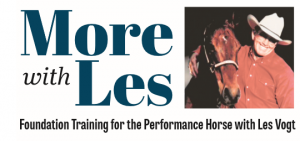 Once your horse is sidepassing along the fence really well, move him out to the middle of the arena and give it a try. Remember again to keep his body at least straight. Your goal will be to sidepass him so that his head and hip are actually curled toward the direction he is going, which requires a lot of shoulder and hip control—so you need to be really conscientious about his head and neck alignment.
Once your horse is sidepassing along the fence really well, move him out to the middle of the arena and give it a try. Remember again to keep his body at least straight. Your goal will be to sidepass him so that his head and hip are actually curled toward the direction he is going, which requires a lot of shoulder and hip control—so you need to be really conscientious about his head and neck alignment.
Lack of Confidence?
 It gets to us all at some point: the feeling that maybe you don’t quite have what it takes to make it happen.
It gets to us all at some point: the feeling that maybe you don’t quite have what it takes to make it happen.
Perhaps you have just entered a competition and are excited about the challenge of bringing your horsemanship to the next level. You arrive at the show and your insides are in a twist. You can’t believe you signed up for this. You watch the other competitors warm up their horses and you feel out of your depth.
Or, maybe you are struggling to get to the next phase of your riding ability and you feel as though it is a physical impossibility. You are out of your comfort zone and easily frustrated. Your movements are awkward, and attempts to execute new habits and a different riding style have proved unsuccessful. You need to ride faster, develop a better seat, be softer with your hands, use your legs, stop leaning, watch the cow, etc. You know what you are supposed to do and what it is supposed to feel like, but you are unable to transfer your vision from your head to your hands, seat and legs in a time frame that you have set for yourself.
Perfecting Exercises 3 & 4
Foundation Training for the Performance Horse with Les Vogt
 After lessons in collected stops, Les will move us this issue into Exercises 3 and 4 in his training program.
After lessons in collected stops, Les will move us this issue into Exercises 3 and 4 in his training program.
Objective
• To perfect your control of the horse’s whole body and hip
• To be able to move your horse’s body laterally without lett ing the shoulder lead
• To get to the point where you can move through exercises one through four both directions on a semi-loose rein
Think outside the box
"It’s important to keep in mind that aggression does not resolve aggression."
 A 3-year-old gelding was brought to me to get started — a stud colt until a couple months prior to his arrival. He’d been shown in halter and had prodigious breeding, but he had begun to display deliberately aggressive behavior like biting, striking and kicking.
A 3-year-old gelding was brought to me to get started — a stud colt until a couple months prior to his arrival. He’d been shown in halter and had prodigious breeding, but he had begun to display deliberately aggressive behavior like biting, striking and kicking.
Temperament of stallions varies because of factors such as genetics and training, but because of their instincts as herd animals they require knowledgeable management by experienced handlers. Even though this colt had been gelded prior to coming to me, he was still exhibiting “stallion behavior.” It takes about 60 days for hormonal levels of testosterone to become insignificant for breeding; however, the behavior is brain-related, not merely hormonal, and it can become habitual. Stallion-like behavior can linger well after the hormonal effects of testosterone have diminished, that was the case with this gelding.
Collected Stop: Final Notes
 In the last couple of columns, we have covered a lot of detail. Here are some wrap-up notes to remember. (Find all “More With Les” columns at: http://bit.ly/HTmorewithles)
In the last couple of columns, we have covered a lot of detail. Here are some wrap-up notes to remember. (Find all “More With Les” columns at: http://bit.ly/HTmorewithles)
Teaching the horse to assume the stopping position
• Drive with the back legs, but keep front legs going
• Power comes from the loin
• To use the loin, back has to be round
• Neck has to be down for back to be round
• For the neck to be down it has to be soft!
How to create the ultimate collection is from the back to the front: Make the horse go and let them stop
Start at the walk: You want to stair-step up, and don’t be afraid to go back
Don’t make a big deal out of anything that you don’t want to be a big deal: If you go after a problem directly you will get the horse defensive


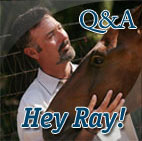
 Read Columns
Read Columns
